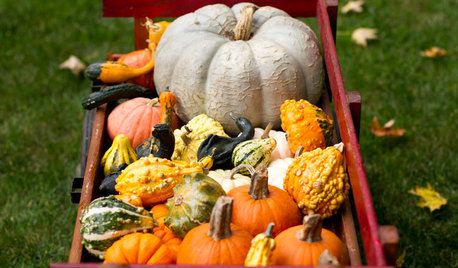It is a common myth that herbs are natural so they are harmless. The truth is that herbs sometimes contain potentially harmful compounds. Some of the better known herbs with the potential to cause serious harm include foxglove, belladonna, arnica, oleander, jimson weed, poke root, and lobelia.
The most common poisons found in herbs are cardiac glycosides and alkaloids. Cardiac glycosides slow the heart and strengthen the heartbeat. This is beneficial for certain people with heart problems such as congestive heart failure. On the other hand cardiac glycosides can create a serious drop in blood pressure leading to a stroke or stoppage of the heart. Digitalis, from the foxglove plant, is a common cardiac glycoside used in the treatment of some forms of heart disease. It is a powerful drug that has been used to save countless lives. Oleander contains 3 different cardiac glycosides, which has killed numerous people and pets. Every part of the plant is poisonous. Most people are killed when they use the branches for a hot dog or marshmallow stick, or stir their coffee with a twig. Children are often poisoned from chewing on the leaves or flowers. And a dog died after running through the smoke of the leaves being burned by the owner. Even honey made from the pollen of the plant is poisonous. Herbs containing cardiac glycosides include foxglove, belladonna, henbane, oleander, lily of the valley, and night blooming cereus (cactus grandiflorus).
The best known alkaloid, and most widely abused drug in the world, is caffeine. Another well known alkaloid, and dangerous drug, is nicotine found in tobacco and horsetail grass (shavegrass). This alkaloid is commonly used as an insecticide. Jimson weed is used rarely as a medicinal herb, and unfortunately sometimes as a recreational drug. This plant contains 3 very dangerous alkaloids known as scopolamine, atropine, and hyocyamine. Even though alkaloids have the potential to be dangerous, they can also be very beneficial. Alkaloids are the most common active compound in herbs, and the basis for nearly every pharmaceutical drug in existence.
A common question is whether or not herbs can interact with pharmaceuticals. The answer is yes. Just as pharmaceutical drugs can interact with pharmaceutical drugs, herbs can interact with pharmaceutical drugs, or with other herbs. This can be dangerous or beneficial depending on how it is used. Herbs can be used to prolong the effects, or enhance the absorption, of pharmaceutical drugs or other herbs. Or they can be used to strengthen the effects of pharmaceutical drugs or herbs. Here are some examples:
-Licorice root taken with steroidal drugs, such as cortisone, will strengthen and prolong the effects of the steroidal compounds. Licorice root can also enhance the absorption of other compounds.
-Echinacea can prolong the excretion time of pharmaceutical drugs and herbs. This can cause a potential problem if a dangerous drug or herb is being taken on a schedule. Drug levels in the blood will not have dropped as low as they would have normally before the next dose is taken. This could lead to an excessive buildup of a drug, or herbal compounds, in the blood.
-Hawthorn berry, Siberian ginseng, and plants containing cardiac glycosides will strengthen and prolong the effects of digitalis.
-White willow, meadowsweet, deer's tongue, sweet woodruff, cayenne, ginger root, licorice root, lomatium, sweet clover (meliot), alfalfa, spearmint, peppermint, birch, and wintergreen can increase the blood thinning effects of coumadin and aspirin.
-Licorice root, goldenseal, barberry, and Oregon grape root can accelerate potassium depletion if you are on pharmaceutical diuretics.
-Herbs containing cardiac glycosides, or smooth muscle relaxants may create excessively low blood pressure in people taking high blood pressure medications.
-High tannin containing herbs such as white oak bark, oak galls, manzanita leaf, and uva ursi leaf can combine with medications, and pull them out of the body. This can be very dangerous if you are on life saving medications.
-Fresh comfrey root and leaf, germander, boneset, nutmeg, and coltsfoot may cause liver damage if used in high doses, or for extended periods of time. Many pharmaceuticals are well known for causing liver damage, and chemically induced hepatitis. Examples of these types of drugs include cholesterol lowering drugs, the pain killers ibuprofen (Advil, Motrin, etc.) and naproxen sodium (Aleve), and the hair growing drug minoxidil (Rogaine). Taking these herbs with any of these medications can increase the risk for serious liver damage.
Herbs can effect other herbs as well. This principle is often used to enhance the effectiveness of other herbs. An example is the combining of yerba mate' with pau d' arco, in South America. Pau d' arco is a powerful antiviral, though it's effects are enhanced by sulfur compounds. Yerba mate' is traditionally combined with the pau d' arco to provide the sulfur compounds. Other herbs can be used to enhance the absorption of other herbs. Yucca root, schisandra berries, licorice root, alfalfa, ginger, cayenne, dandelion leaf, and juniper berries are examples of herbs that enhance absorption, and effectiveness of other herbs. Though keep in mind that increased absorption can mean a potential for increased toxicity of certain herbs. Combining yucca root with poke root provides an example. Poke root is a fantastic immune stimulant, antiviral, and lymphatic cleanser, though it can also be poisonous in relatively small doses. Mixing yucca root in a formula with poke root, the risk of poisoning increases. Percentages of toxic herbs can be adjusted to compensate for their enhanced absorption to reduce the possibility of poisoning. Another example of a danger from mixing herbs can be seen with a mixture of lobelia with ginger. Lobelia is generally safe in small doses. Larger doses will normally cause vomiting which prevents the herb from poisoning the body. Though ginger suppresses the vomit centers in the brain better than drugs such as Dramamine. If the ginger prevents the vomiting up of the lobelia, the lobelia can relax the lungs to the point where a person could stop breathing.
Women who are pregnant should be especially careful when using herbs. Many herbs are uterine stimulants and may cause the fetus to abort. This is especially dangerous in the later stages of pregnancy when the risk of serious bleeding by the mother is greater.
Herbs may also be used to counteract side effects of other herbs. For instance a pregnant women can use smooth muscle relaxants such as red raspberry leaf or cramp bark to reduce the risk of spontaneous abortion by other herbs. High potassium herbs such as dandelion root can reduce the potassium depletion created by licorice root, barberry, goldenseal, and Oregon grape root.
Liver protecting herbs such as milk thistle, turmeric, artichoke leaf, and licorice root can be used to protect the liver from the effects of liver damaging herbs. Though many herbs considered toxic to the liver, such as comfrey, were found in some studies to only be harmful to the liver when taken in a fresh form. The dried herbs were not found to harm the liver. It is still recommended that when using herbs that are potentially harmful to the liver, you should combine them with liver protecting herbs.
Herbs should be given the same respect as pharmaceuticals. Herbalists should mix herbs for maximum effectiveness with the minimal chance of adverse side effects. Unfortunately this does not always happen. For example many diet formulas rely on ephedra (ma huang) and a caffeine source, such as guarana or kola nut, to stimulate the burning of body fat (thermogenesis). Though this works, it also overstimulates the adrenal glands leading to adrenal exhaustion. Adding adaptogenic herbs to the formula will help support the adrenal glands. Though, despite the possibility of damage to the adrenals by thermogenic formulas, many of these formulas still lack adaptogenic herbs to prevent the adrenal glands from "crashing".













robynlacy
rusty_blackhaw
Related Discussions
Slow Your Roll With An Herbal Beverage
Q
Herbal oil / infused oil recipe / instructions?
Q
herbal folklore
Q
Herbal Syneries
Q
Daisyduckworth
bare4windsOriginal Author
rusty_blackhaw
robynlacy
robynlacy
bare4windsOriginal Author
rusty_blackhaw
robynlacy
Daisyduckworth
cacye
robynlacy
lucy
bare4windsOriginal Author
Daisyduckworth
User
lucy
bare4windsOriginal Author
rusty_blackhaw